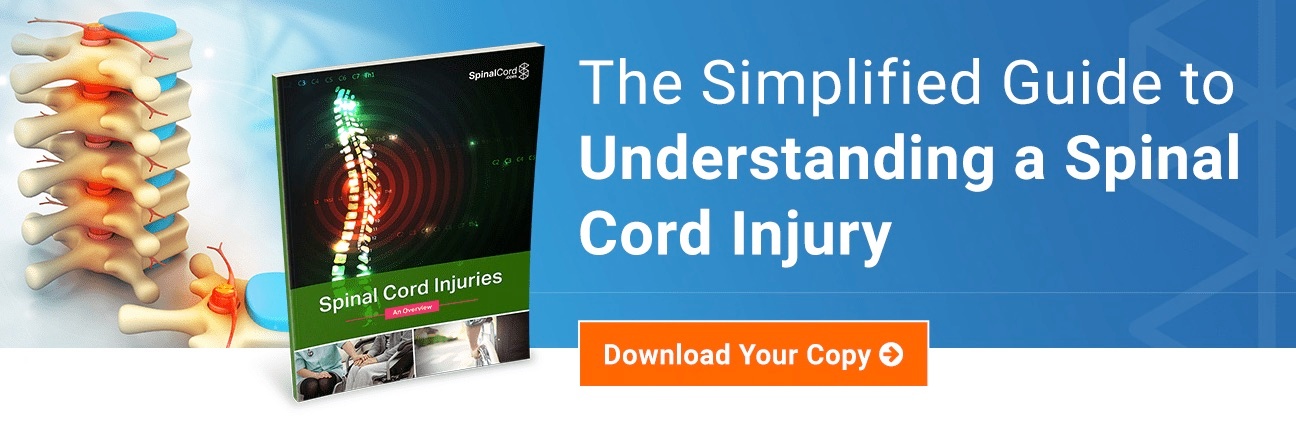What You Need to Know About Spinal Cord Regeneration
Spinal cord regeneration is the goal of every spinal cord injury (SCI) survivor. The idea that your spinal cord, or the spinal cord of someone you love, would be able to regenerate after a traumatic injury may seem nearly impossible if you were to believe long-accepted “knowledge” about spinal cord injury regeneration research.
Although there currently is no cure for spinal cord injuries, the good news is that new research on spinal cord nerve regeneration is always taking place in the U.S. and around the world. This means that long-accepted ideologies of these traumatic injuries are continually challenged, and knowledge of these injuries is changing and growing as researchers seek to find a cure.
There Are Four Key Principles of Spinal Cord Regeneration
According to neuro-regeneration and spinal cord injury research at Mayo Clinic, there are four key components to spinal cord repair:
- Protecting surviving nerve cells from further damage
- Replacing damaged nerve cells
- Stimulating the regrowth of axons and targeting their connections appropriately
- Retraining neural circuits to restore body functions.
The institution reports that its researchers also have completed animal research studies that show promise for the future regeneration of spinal cord nerve connections. The research involved the implantation of a biodegradable polymer scaffold that is loaded with Schwann cells from the peripheral nervous system along with neurotrophins.
Prevailing Theories of CNS Regeneration May Not Be True
As new research on the central nervous system (CNS) and spinal cord continue to take place, they show that something that was once accepted as being impossible to change may not necessarily be the case.
When it comes to the topic of central nervous system regeneration (and spinal cord regeneration as a component of it) in neuroscience, three theories have somehow become accepted as commonplace knowledge to explain why the adult central nervous system can’t regenerate:
- Nogo —a molecule found in the protective sheathing around the nerve fibers in the central nervous system (myelin), blocks the growth of axons.
- Glial scars — a type of tissue that forms after an injury to the central nervous system in a process known as astrogliosis (when astrocytes rush to the area of injury and surround it to create a protective barrier) — prevent axon growth.
- Chondroitin sulfate proteoglycans (CSPGs)— prevent the growth of axons.
However, some researchers have reported the regeneration of spinal tracts in animal SCI research studies in some circumstances despite the presence of Nogo-expressing tissue and glial scars. One study even showed that preventing astrocytic glial scar formation reduced stimulated axon regrowth, meaning that stopping the creation of the scar tissue has an adverse effect on CNS and spinal cord regeneration.
While, in some ways, spinal cord regeneration research may feel like the margarine versus butter argument — which, for years, researchers continually flip-flopped about which was better (or worse) for your health. But, the good news is that by changing preconceived notions about spinal cord regeneration, it opens new doors to future research in those areas that had long been mostly abandoned.
Spinal Cord Regeneration Stem Cells Show Promise
Over the past several years, we have shared a number of articles on the topic of stem cells in spinal cord injury research. Some studies have even shown some spinal cord injury survivors recovering some functional movement as a result of stem cell injections. Some other studies focus on removing barriers that stand in the way of achieving spinal cord regeneration.
One animal research study used self-regenerating stem cells from the olfactory system to secrete a specific enzyme (chondroitinase ABC, or ChABC) to help promote axonal regeneration.
Most recently, we wrote an article on some new advances in neural stem cell (NSC) research that “could have clinical applications in spinal cord injury and disorder treatments.” The study involved grafting immature cultured human pluripotent stem cells (hPSCs) into the spinal cords of rodents with SCIs so they would morph into different types of stem cells throughout the spinal cord. The grafts resulted in promoting some corticospinal axon regeneration and supported functional recovery in the rats.
The Future of Spinal Cord Regeneration
Although it is likely frustrating to hear or read studies about incremental changes or advances in spinal cord research, it’s important to know that researchers are dedicating their professional lives to finding a cure. The hope is that some of these animal studies will be successful enough to move on to a human trial phase to help regenerate spinal cord nerves and spinal cord tissue.
While we wait for these incredible advances, it’s important to remember that you and your family are not alone. There is an entire community of spinal cord injury survivors and loved ones who are here to support, learn, and help each other grow.
To learn more about spinal cord injuries, be sure to check out our complimentary resource by clicking on the link below.
Stay Updated on Advancements On Traumatic Brain &
Spinal Cord Injuries
About the Author





